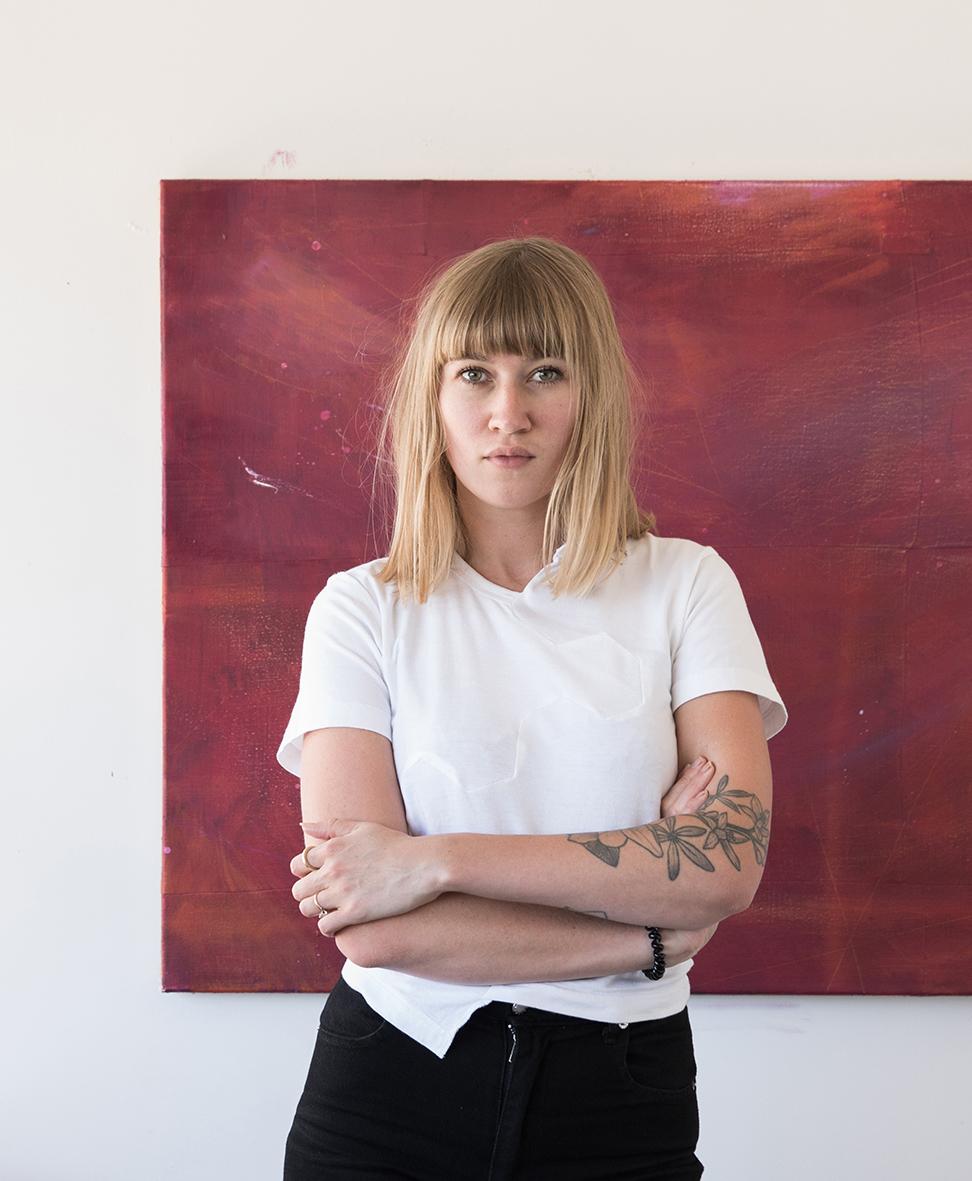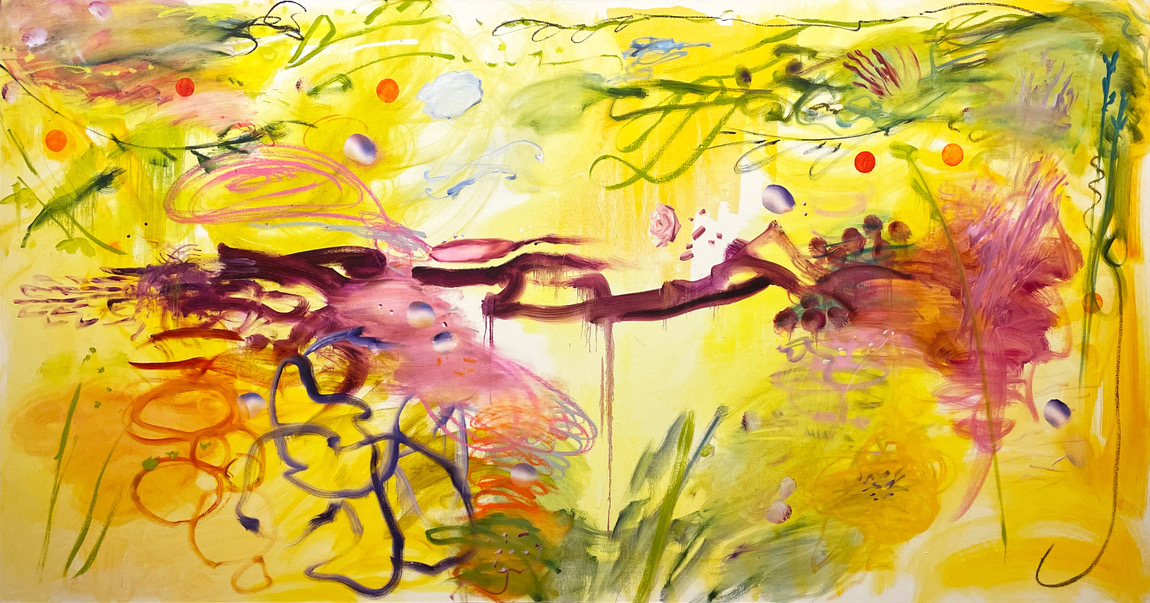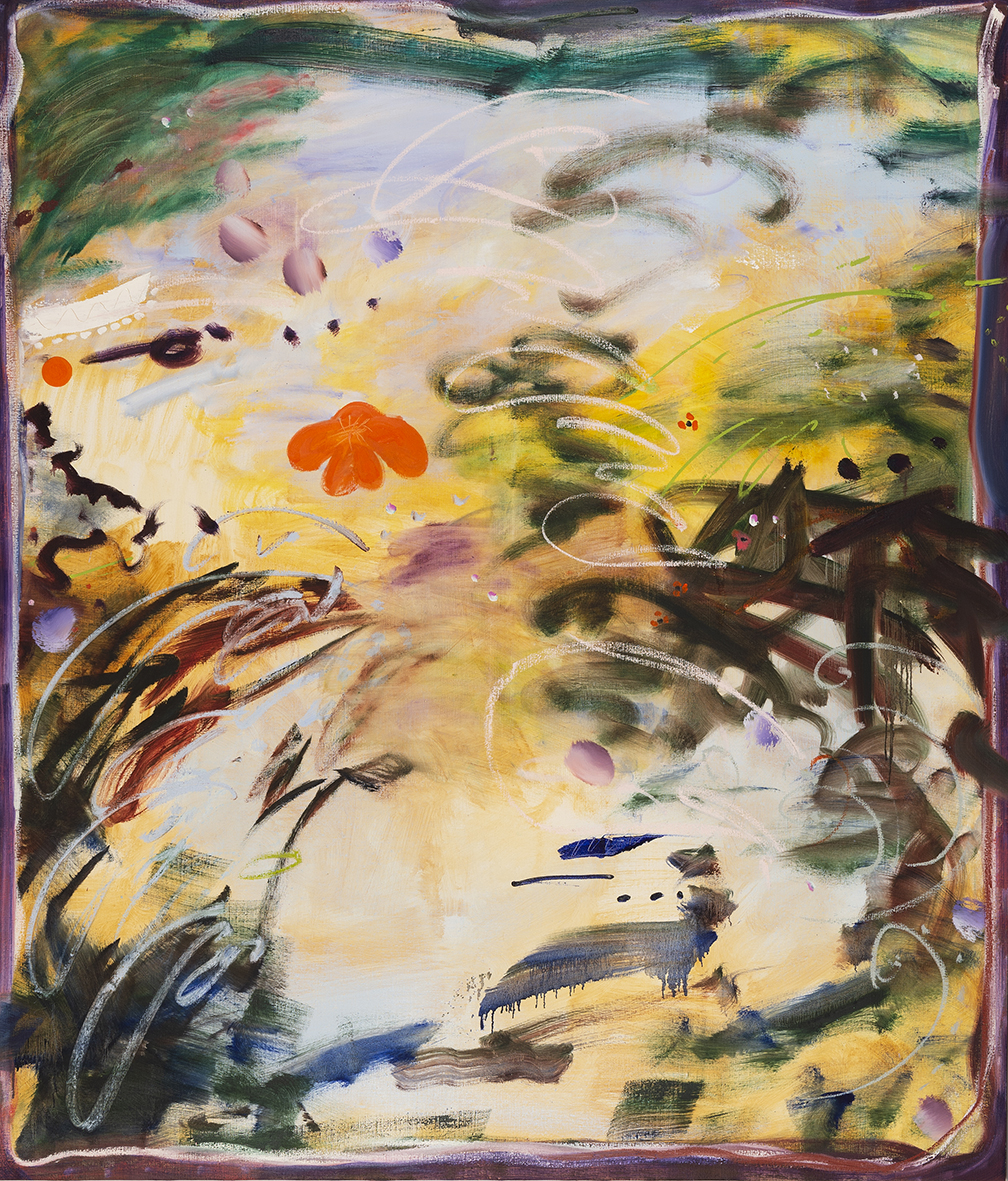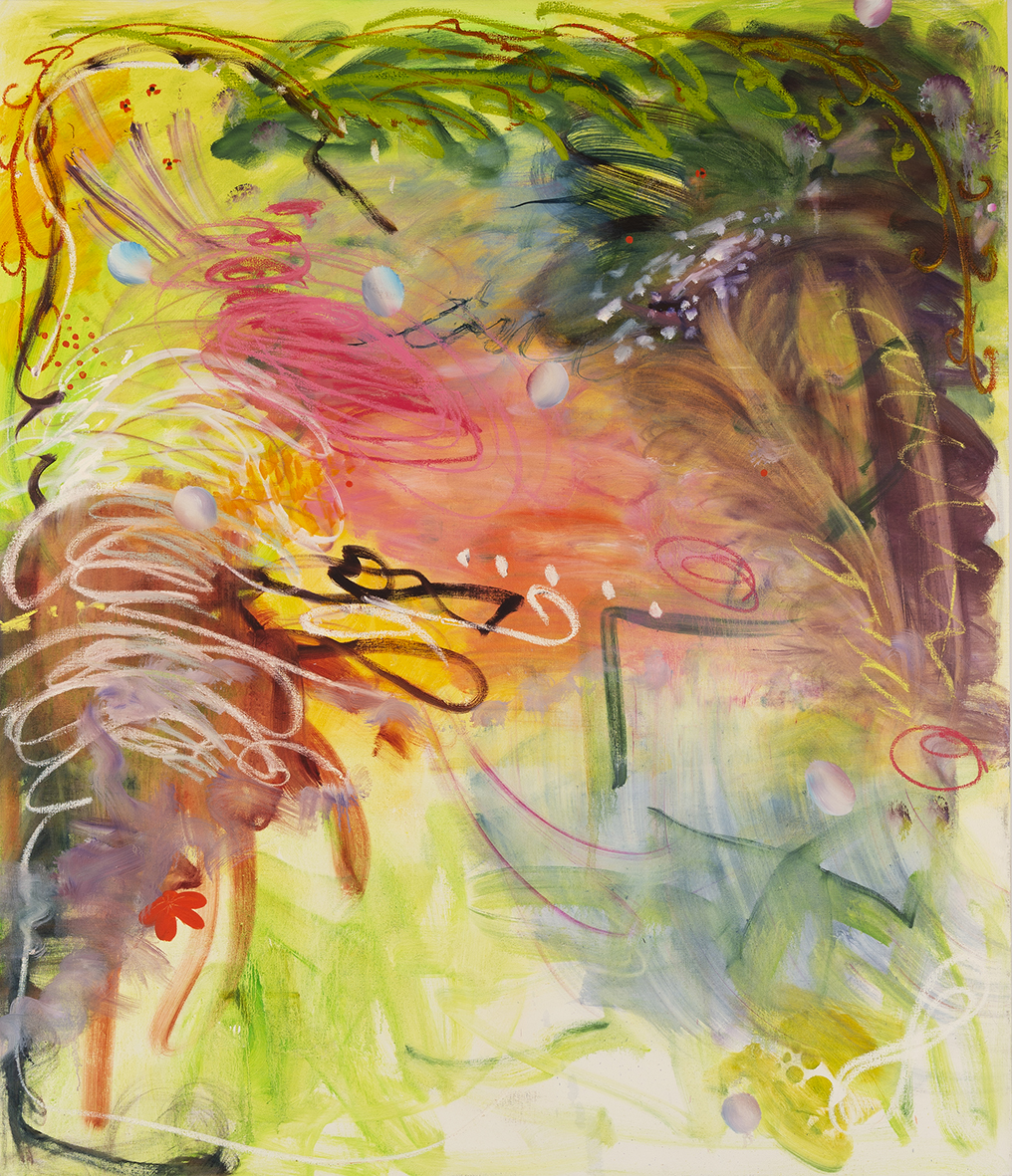
• English version
• Press Release
• Visitor's guide
• Press room
|
Emma McIntyre, Untitled, 2021. 
Emma McIntyre © David Straight Emma McIntyre est une peintre néo-zélandaise née à Tamaki Makaurau en 1990. Aujourd’hui, elle vit et travaille à Los Angeles. Depuis 2012, elle a fait partie de plusieurs expositions collectives en Nouvelle-Zélande. Sa première exposition solo “Loop the Loop” au 30upstairs à Wellington a ouvert en 2016, l'année même où elle a obtenu son diplôme de l’ Elam School of Fine Arts de l'université d'Auckland. Depuis, son travail a été présenté dans de nombreuses expositions à travers la Nouvelle-Zélande. En 2021, l'année de son deuxième diplôme de l'ArtCenter College of Design en Californie, la Chris Sharp Gallery de Los Angeles, en Californie, a organisé sa première exposition personnelle en dehors de la Nouvelle-Zélande. loading…
|
Emma McIntyre, Pink cut pink, 2021. Oil and oil stick on linen, 72 x 64 inches.
1. Entretien avec l’artiste, Décembre 2021, Archives personnelles. |

Emma McIntyre, Seven types of ambiguity, 2021. Oil and oil stick on linen, 72 x 138 inches.
|
Emma McIntyre, Up bubbles her amorous breath, 2021. Oil and oil stick on linen, 72 x 84 inches. |
On a Picture of Leander
COME hither, all sweet maidens soberly, Down-looking aye, and with a chastened light, Hid in the fringes of your eyelids white, And meekly let your fair hands joined be, As if so gentle that ye could not see, Untouched, a victim of your beauty bright, Sinking away to his young spirit’s night, Sinking bewildered ’mid the dreary sea: ’Tis young Leander toiling to his death; Nigh swooning, he doth purse his weary lips For Hero’s cheek, and smiles against her smile. O horrid dream! see how his body dips Dead-heavy; arms and shoulders gleam awhile: He ’s gone; up bubbles all his amorous breath! Mars 1817 De John Keats (1795–1821) |
|
Emma McIntyre, Blood moon, 2021. Oil and oil stick on linen, 16 x 14 inches. 
Emma McIntyre © David Straight Emma McIntyre is a New Zealander painter born in Tamaki Makaurau in 1990. She now lives and works in Los Angeles. Since 2012, she has been a part of multiple group shows in New Zealand. Her first solo show “Loop the Loop” at 30upstairs in Wellington opened in 2016, the same year she graduated from Elam School of Fine Arts at the University of Auckland. Her work was presented in multiple shows around New Zealand since then. In 2021, the year of her second graduation, this time from the ArtCenter College of Design in California, the Chris Sharp Gallery in Los Angeles, California organized her first solo show outside of New Zealand. loading…
|
Emma McIntyre, Untitled, 2021.
1. Interview with the artist, December 2021, private archive. |

Emma McIntyre, The laws of night and honey, 2021. Oil and oil stick on linen, 67 x 79 inches.

Emma McIntyre, The light of ambivalence is a heavenly one, 2021. Oil and oil stick on linen, 84 x 72 inches.
All images All rights reserved
Courtesy the artist and Air de Paris, Romainville